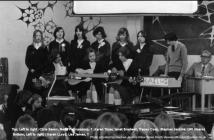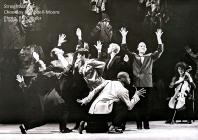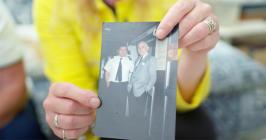Gellir lawrlwytho cynnwys at ddefnydd anfasnachol, megis defnydd personol neu ar gyfer adnoddau addysgol.
Ar gyfer defnydd masnachol cysyllwch yn uniongyrchol gyda deilydd yr hawlfraint os gwelwch yn dda.
Read more about the The Creative Archive Licence.
Disgrifiad
The entrance to the church is quite flat and easy for wheelchairs and scooters. There is documentary evidence which confirms that there was Church in the vicinity as early as 1201 - the church's priest, Kennig, was called upon to witness an agreement between Gwenwynwyn, Prince of Powys, and the Cistercian monks of Ystrad Marchell concerning a fishery on the river Dyfi. A church with both rectory and vicarage is subsequently mentioned in an ecclesiastical survey of 1253. The present church was described as 'an imposing medieval building with a carved screen, pews and tracery windows', by traveller Richard Fenton in 1808. The castellated tower has a peal of six bells and is oldest surviving part of the building (foundations 15th century, with the belfry added or restored in the 18th century). The stone the tower is made from is noticeable different from the nave and chancel. The church was completely rebuilt in 1827 to the design of E Haycock, architect of Shrewsbury. Major work appears to have been undertaken on the Chancel in 1843, with the churchwardens authorised 'to make the best bargain they can towards effectively repairing the East End of the church and if necessary to take that end down'. Other alterations and modifications were made in 1864-6, to the design of architects Poundley and Walker. These alterations included changes to the chancel, its arch and window, and the removal of the galleries. Further modifications were made in 1894 with a contribution of £500 towards the work being made by the Marchioness of Londonderry. The chancel was extended, two new windows were inserted in the west end, and all the windows were arched with Bath stone in the Gothic style. The organ and choir were moved and the choir given new stalls. A new baptistery was also added. The church has eleven beautiful stained glass memorial windows dating to 1883 and 1886. The oak pulpit and choir stalls are in memory of the Lord Henry Vane Tempest. Above the door in the entrance porch are wooden tablets recording the various gifts of money and property bequeathed to the parish to assist the poor. The bequest given by Humphrey Lewis seems to be quite ahead of its time, as it states that both boys and girls could benefit from the apprenticeships to be supported.






Oes gennych chi wybodaeth ychwanegol am yr eitem hon? Gadewch sylwad isod
Sylwadau (0)
Rhaid mewngofnodi i bostio sylw